One throughline in last year’s writing was that we should, whenever possible, make our ideas visible and tangible. Here I will continue the effort to practice what I preach.
Another concept we’ll build on today is that it always pays to start by making sense of things as they are now and their trajectories — the current state — before we make the next move.
We’ll take these two directives to heart while trying to make sense of research itself. To get a handle on our current state, we’ll start by zooming out to our larger context, the system that research works within.
First sketches: research and the larger system
For those of us trying to make effective, humane, and valuable software-shaped things — whether we are researchers or not — there are three initial areas we need to be aware of: call them organization, product, and customer context.
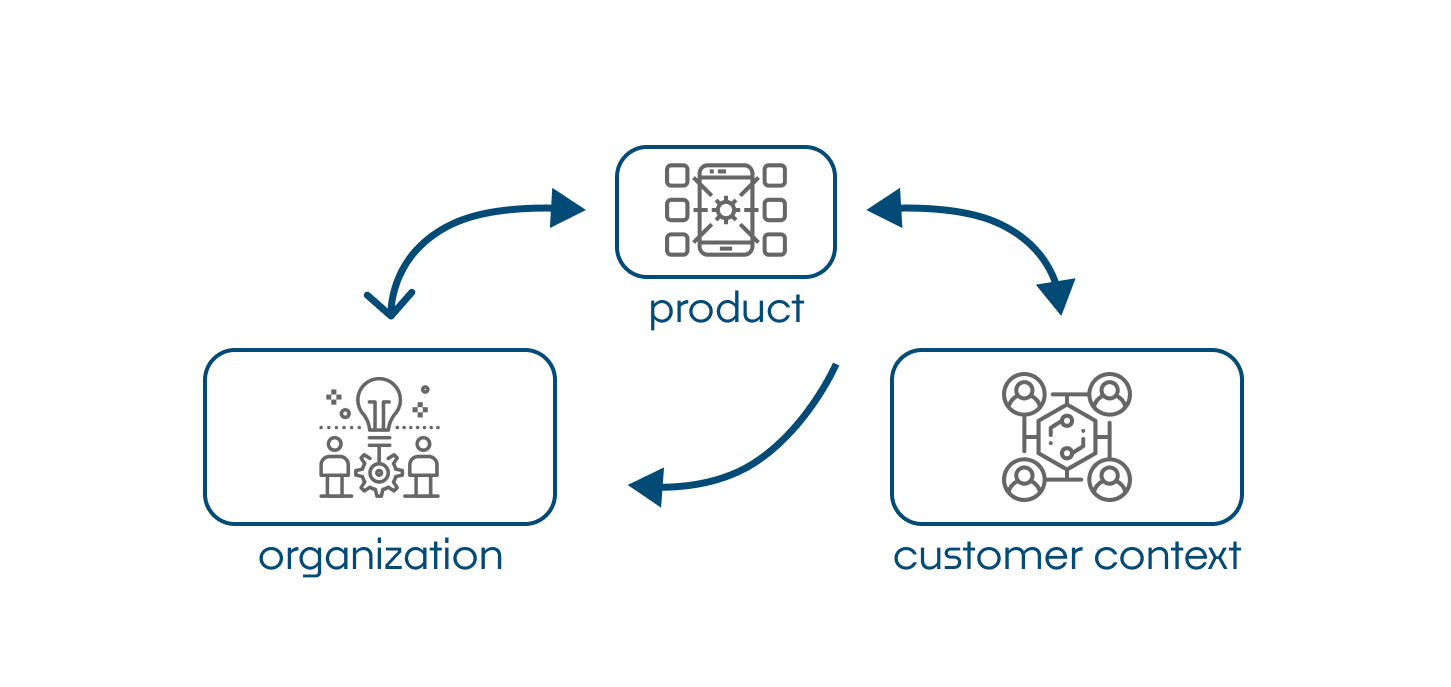
First and most visible is the product we produce, or the portfolio of products thereof. Just as important as that product output is the current state of the customer context, the larger ecosystem that the product serves. Third, the ultimate arbiter of policy and product is the organization itself.
The connections shown here are important, too.
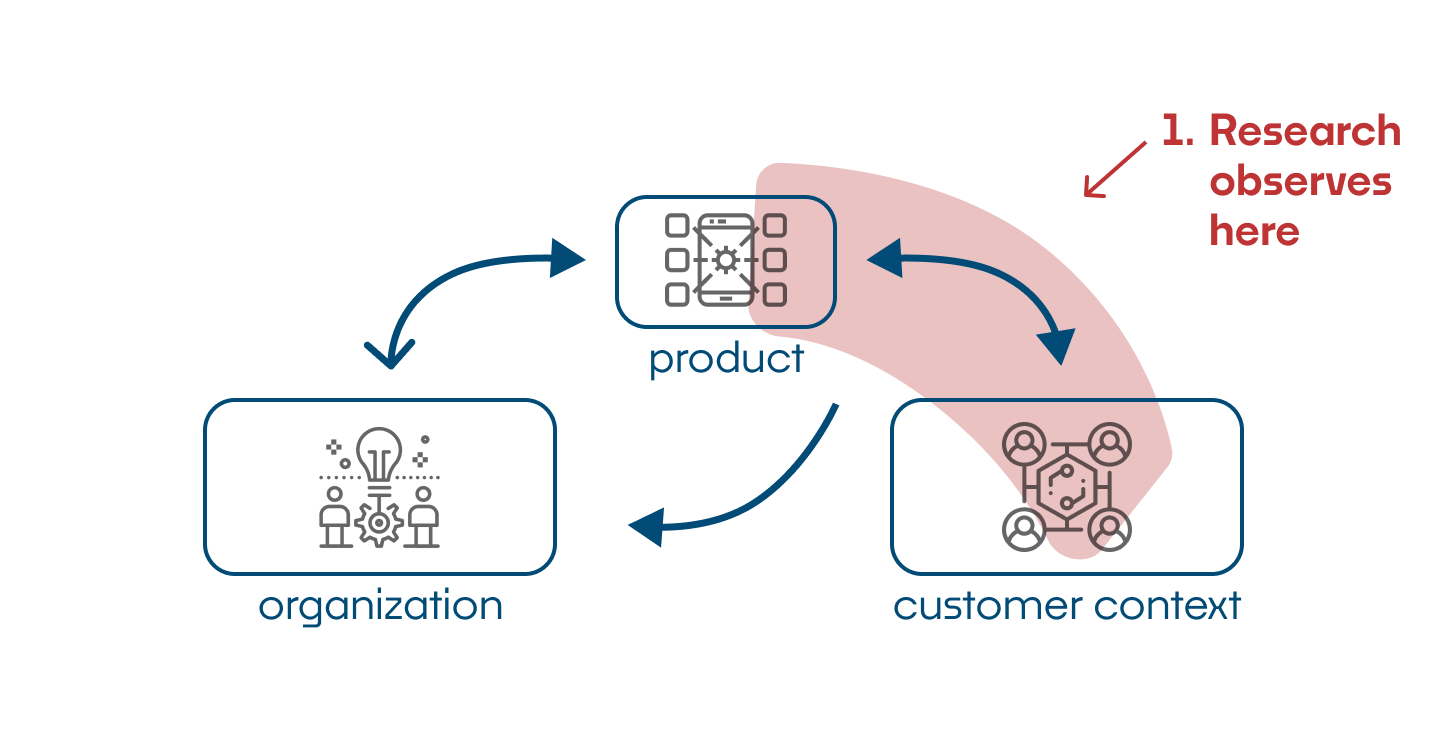
Between product and customer context is a link between two ever-changing slices of reality that [we hope will] couple, fit, and co-evolve, with value flowing in both directions. This whole and its parts is where we're trained to focus our attention as functional research practitioners.
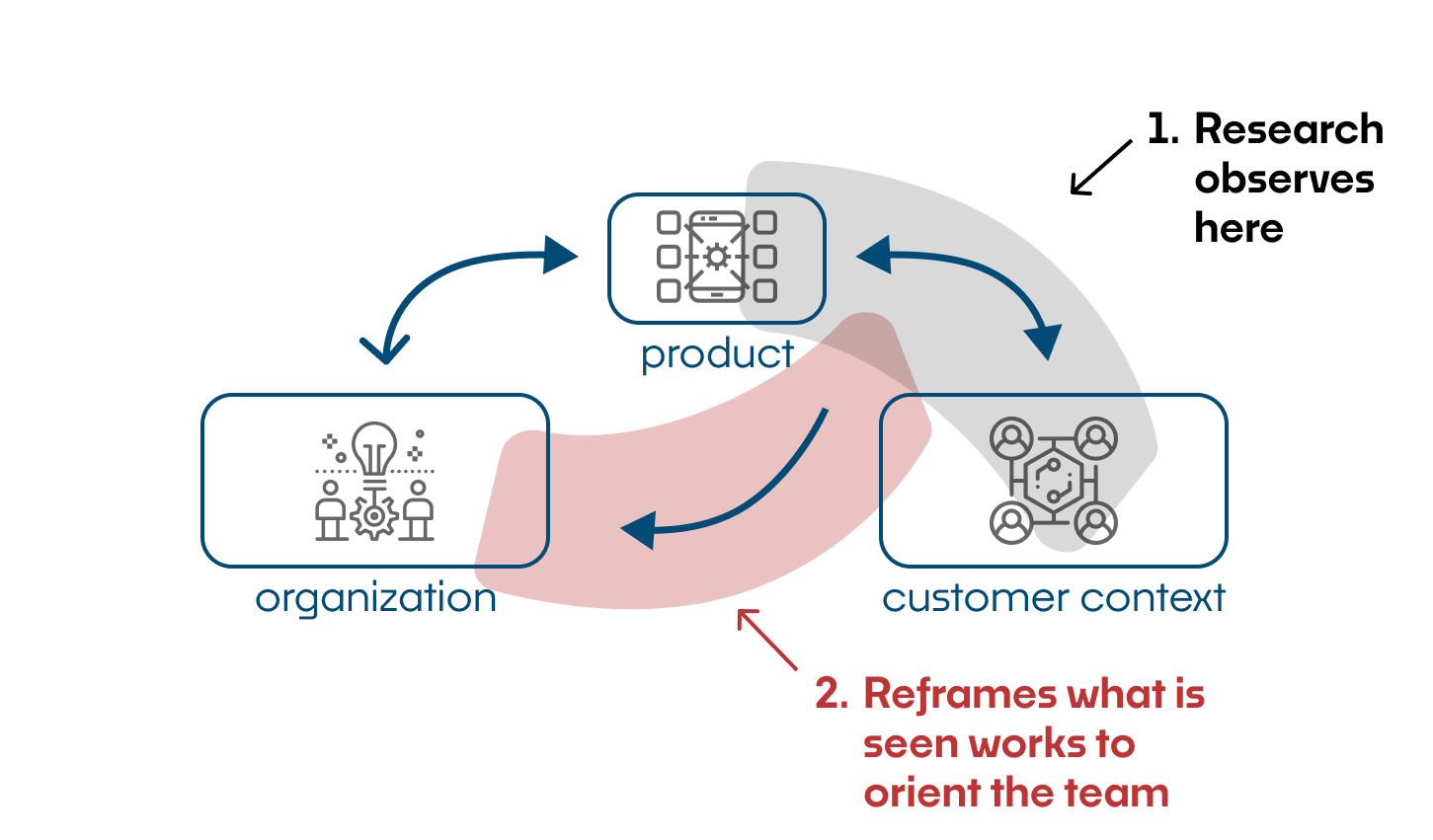
When research works, it provides an interpretive learning loop that establishes, augments, and refreshes the larger team's understanding and supports effective decision-making. We select and highlight the critical factors of the product <> customer context situation and ensure they're framed in such a way that they make sense to the team we're working with. But the acts of reframing and synthesizing alone — unless they are carried out with the full involvement of the team, which is frequently infeasible — don't necessarily close the loop.
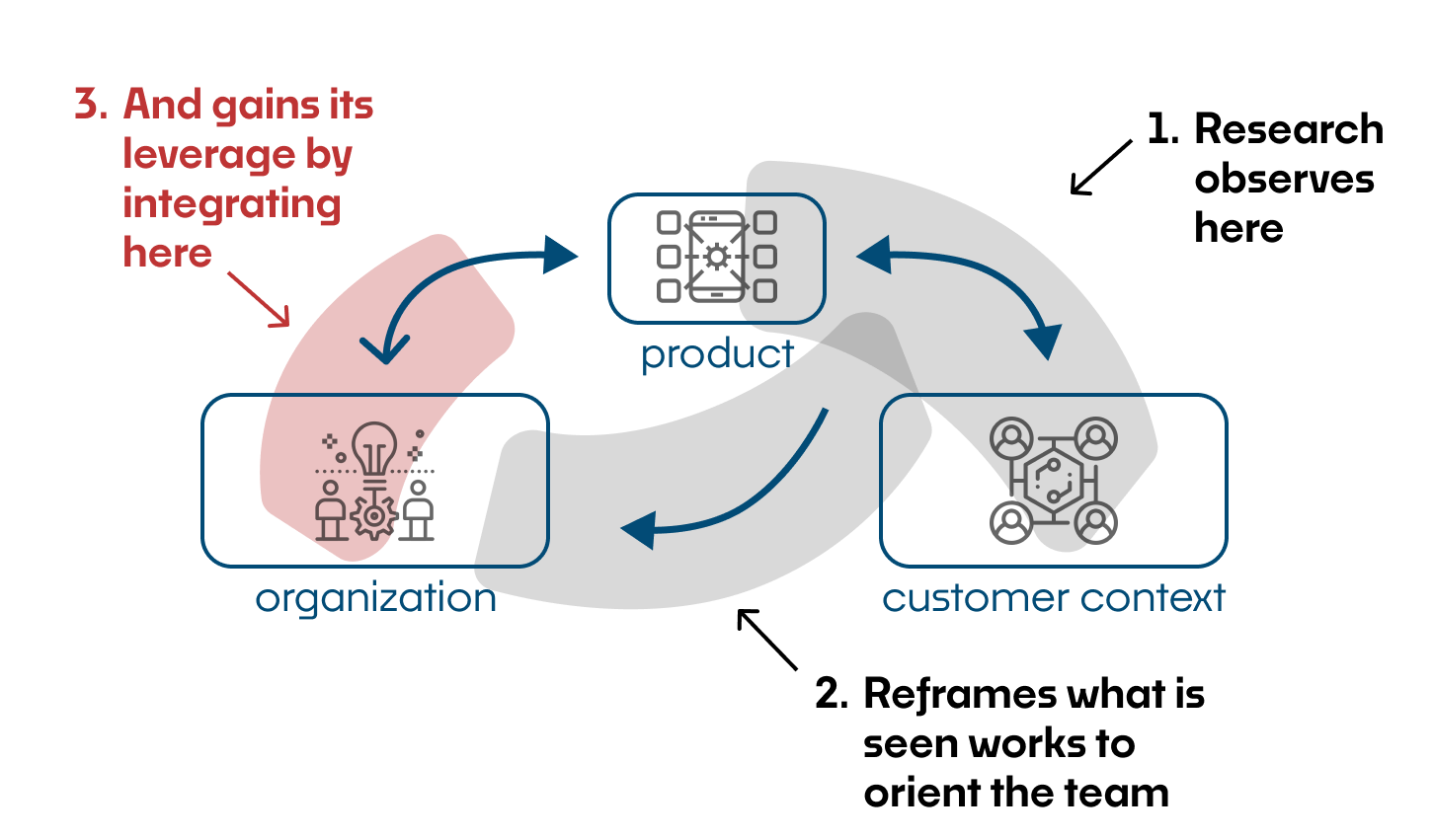
Between the organization and the product: the organization maintains and grows a product, and the product provides the signals and information the organization deems important enough to measure through instrumentation (data analytics, and dashboards.)
We need to hook our work into organizational cycles, forces, and behaviors or align it to quantitative measures to close the loop. Effective work that closes the loop doesn't necessarily mean the product must change, but it should mean that the team sees and interprets the product and the customer context in a new light which increases their ability to make good choices (reduces risk, identifies value, highlights new critical information.) As an industry we're already becoming much more experienced in blending the quantitative with the qualitative, partnering with data science and analytics teams, and even growing the role of quantitative user researchers.
The organizational-forces side of things is a bit more difficult. We'll focus over the coming year on unpacking what's happening here, and how our practice will evolve with and anticipate the forces at play. And, before we look there, I'll try to sketch a shared baseline, still abstract for now, of the kind of activity that's going on when we do research work.
The uber-loop, observation, and orientation
Our second starting concept — working from current state understanding — has long been part of strategy lore. Lao Tzu noted that the journey of one thousand miles begins beneath one’s feet, and in more martial capacity Sun Tzu said in The Art of War that “If you know the enemy and know yourself, you need not fear the result of a hundred battles.”
The overarching “ur-framework” of strategy as a continuous process in a competitive environment was described best by John Boyd through his work on the OODA loop, shorthand for Observe, Orient, Decide, Act.
It’s worth investigating, as the OODA loop is a master framework that fits with and presupposes many of your favorite methods and processes: design thinking fits, the double diamond is two OODAs snugged together, the research process is similar, and true "agile" work comprises iterations of the OODA loop at an appropriate level of scale. This is a bit glib, as each process here is adapted to its context of use, but it serves to show the loop's use as the underlying archetype.
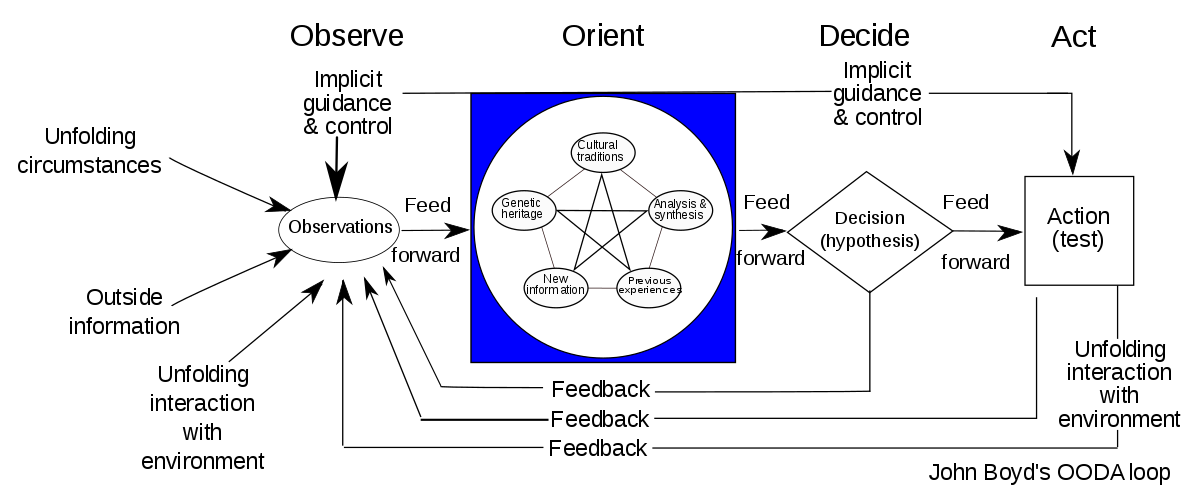
Crucially for us, it allows us to reframe the work of research as one that's primarily concerned with the first two phases, as Observing and Orienting, and its nature as a loop frames the work as one iteration of a continuous process, rather than a collection of disconnected and isolated acts of observation.
Quoted in Robert Coram’s Boyd: The Fighter Pilot Who Changed the Art of War, Boyd saw orienting as the crux of the OODA loop, and defined it thusly:
“Becoming oriented to a competitive situation means bringing to bear the cultural traditions, genetic [DRC: "intellectual / organizational"] heritage, new information, previous experiences, and analysis / synthesis process of the person doing the orienting—a complex integration that each person does differently.”
This act of orientation is the kind of baseline critical thinking that marks an experienced researcher, and the kind of integrative process that is developed and instilled into the larger organization by a capable research team.
Boyd rightly characterized this strategic process as a loop because it is part of an ongoing cycle. And not just one: it nests, cascades, recurses, and manifests out of itself, from the hopefully-coherent collective level down to team and individual action. It lives at many levels of scale for many kinds of decisions over different spans of time.
A lot of Observe and Orient is going on, and in product design and development, much of it must be pointed at the customer context as well as its coupling with the product. Regardless of who does it, observing customer context and interpreting the current state situation is a critically necessary capability for any effective product team, and it's a cyclical, ongoing need.
Integrating integrative orientation
In the context of business, as the environment changes, old observations and orientations do not remain true. Every piece of insight — at ecosystem, market, customer, product, user, or usability level of scale — has a fixed-duration shelf life that may last for years or may only serve us for a few weeks or days
How this work to observe and orient is undertaken, and how it sits in and lives within the organization, is a moving target. But as long as organizations change, and are a part of an ever-changing environment, the need to see, interpret, and understand the current state of things remains critical.
If we revisit the final sketch, there is a wide-open field of organizational forces, events, and functional cycles that research does not often engage with — well beyond the quantitative signals derived from product instrumentation and analytics — that all interact with and affect the product and its relationship with the customer context.
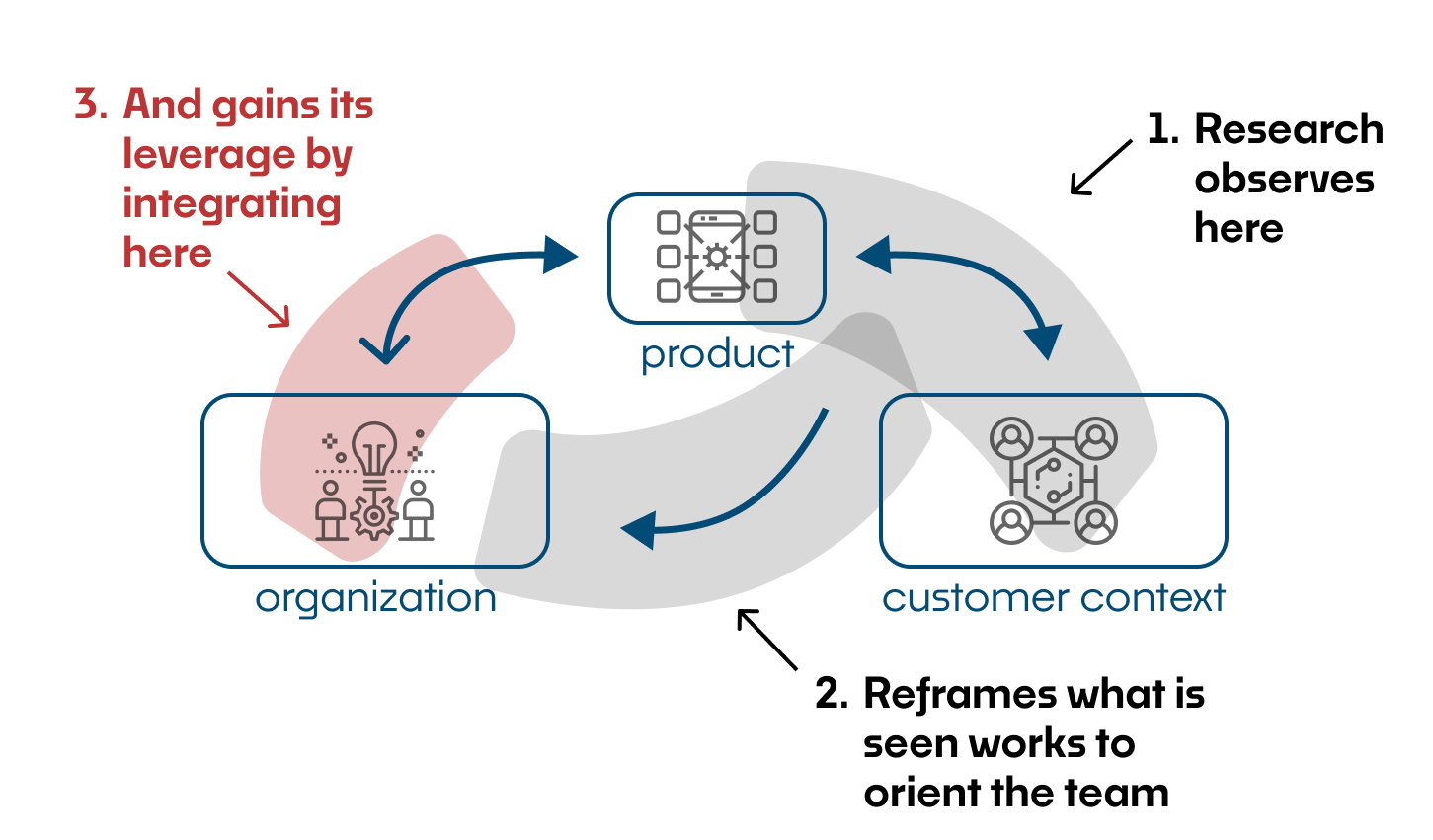
These include technological trends, business strategy, financial planning, legal and regulatory concerns, product roadmaps, organizational structure, engineering and release processes, technical debt and dependencies, sales cycles, support staff, marketing events, customer lifecycles, and the inevitable [inter]personal dynamics that arise as a group of people works together toward a shared goal.
It sounds like a daunting list of factors at play, but the larger the list, the better: each offers an opportunity to integrate orientation pathways into new areas of the organization and to grow our understanding of what it means to undertake the valuable, professional work of research.
Our current ways of work grew from an academic focus on design and human-computer interaction; our methods and our artifacts are strongly pointed in this direction. There is still clear value here, though the work is slowly becoming less specialized. And there's so much more that research can do, and will do, as we open up our ideas about where and how the work integrates into the organization, and how we frame our findings and create new, collective orientation. (Jan Chipchase and Studio D have a noteworthy process for models or frameworks to emerge from throughout a project — this bottom-up approach to framing is a breeding ground for ways-of-orientation that can serve entirely new areas of the organization.)
Even amidst waves of change and a professional reckoning, the way forward is inevitable — it’s to start by understanding where we are right now.
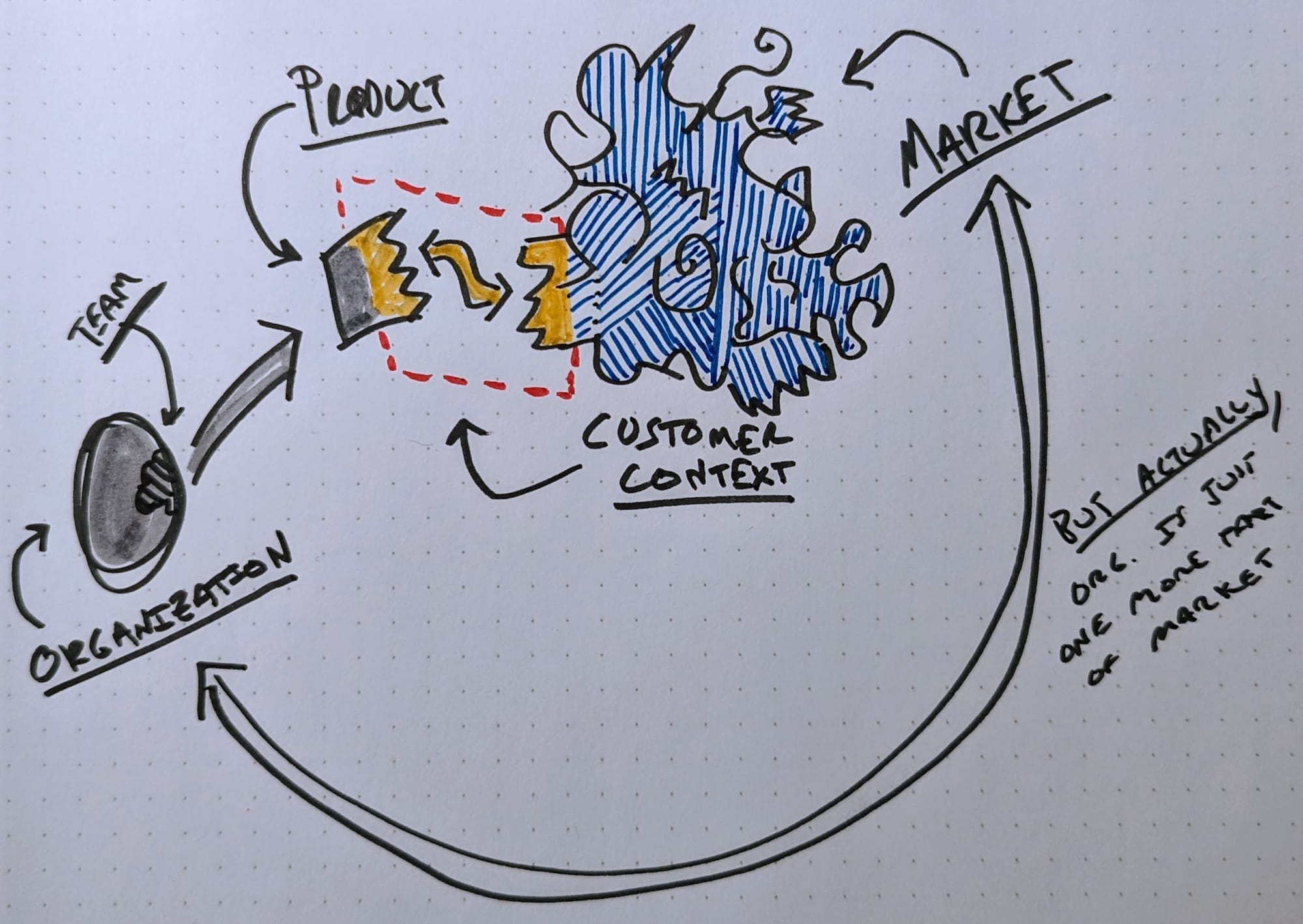
This is part of an ongoing exploration into research as it co-evolves with product practices and re-integrates into the organization.
For weekly thoughts on the nexus of products-organizations-process-strategy, and updates on larger resources like this, consider joining my newsletter.



